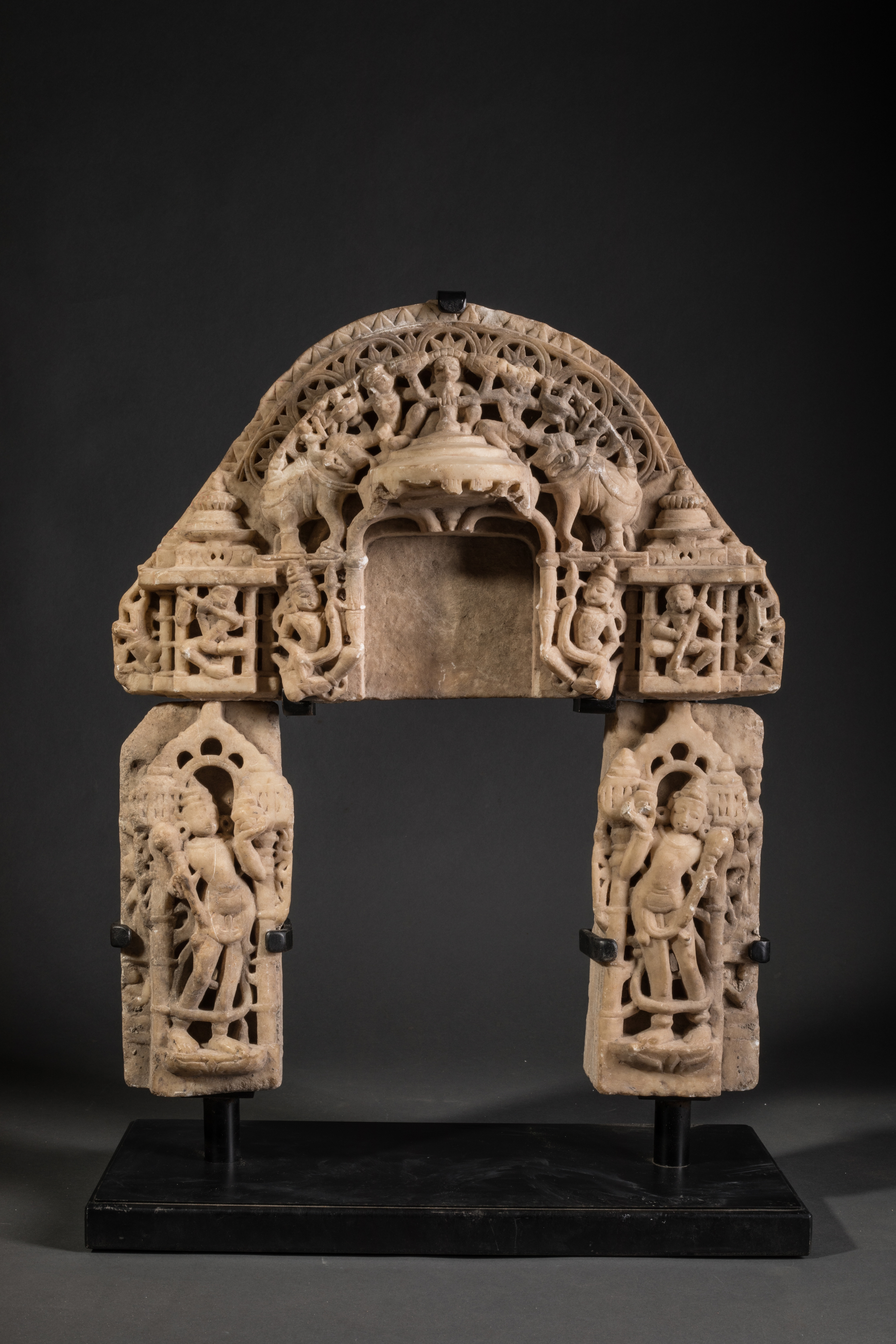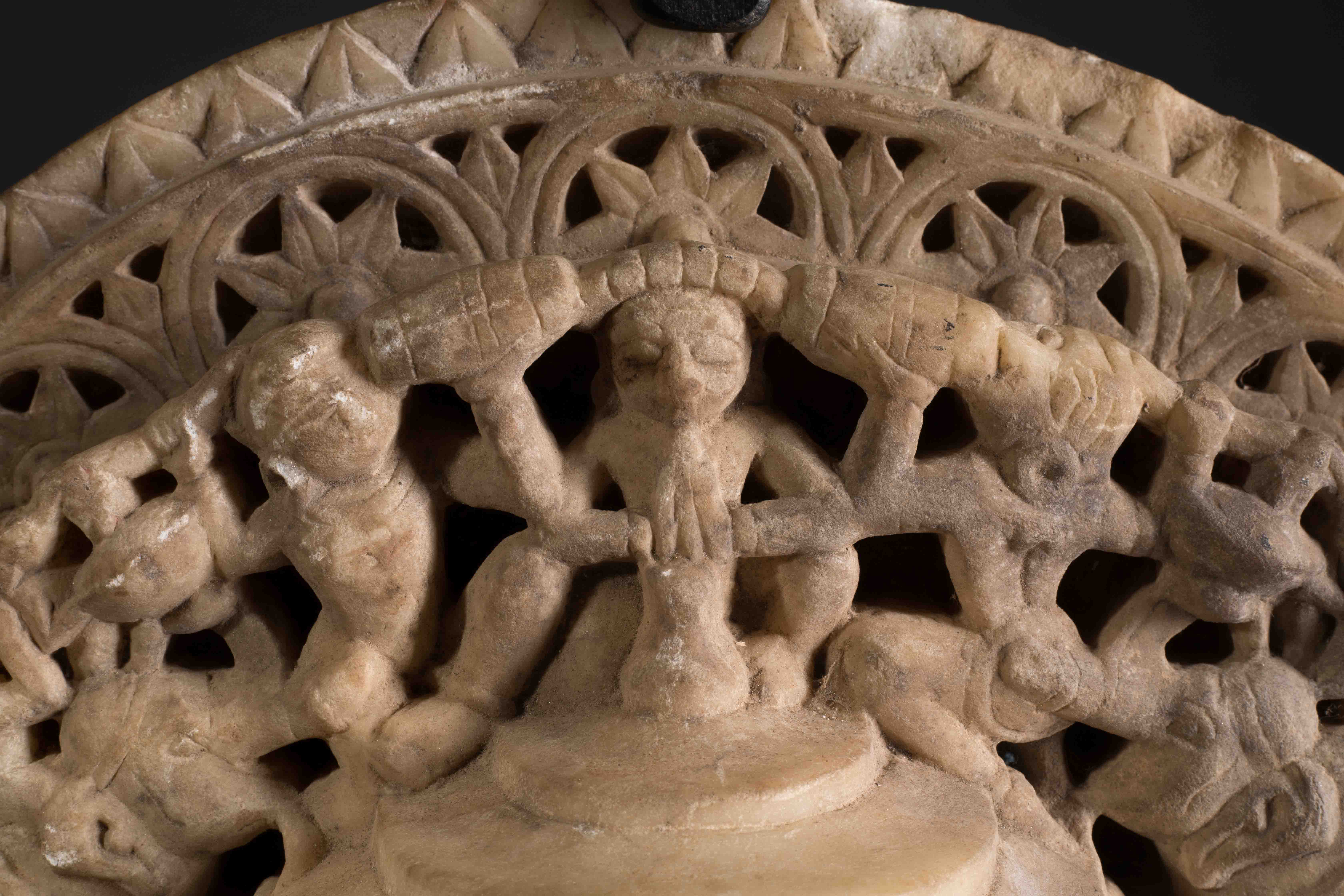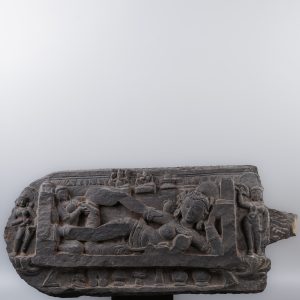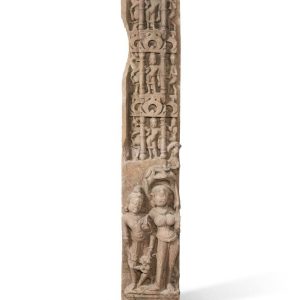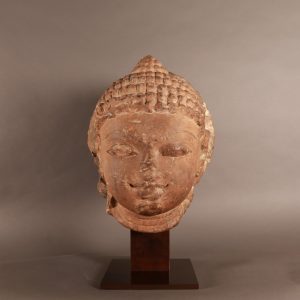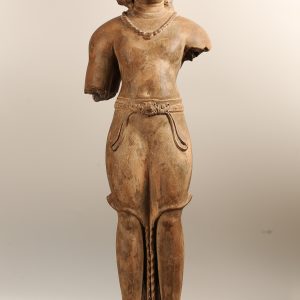Mahālakṣmī
12 000,00€
Alabaster
India, Gujarāt or Rājasthān
Circa 10th century
H. 58 cm
Description
This formidable niche frame from the medieval period (around the 10th century) must be understood in a Jain context, probably in the Indian region of Gujarāt or that of Rājasthān. The smooth appearance of the alabaster, the profusion of decoration combining figurative, architectural and geometric motifs, and the substantial size of the piece (58 cm high or 22 ⅞ in), all this give this work an extremely decorative character.
This piece has incredible aesthetic and decorative power. Sculpted in high relief, an openwork has been carved behind each element creating a real stone lace. The depth is manifest between the limbs of the small deities, catching the light and increasing the volumes. The style is refined, detailed and the decorative profusion is balanced by empty spaces which are arranged to concentrate our eye under the niche, where the sacred figure was. Every detail is signified with remarkable precision: in the upper part we particularly like the succession of elements, both geometric and floral, creating a wheel shape and following this curve drawn by the dynamic movement of the participants of the sacred assembly (samavasaraṇa) who listen to the preaching of the now disappeared Jina.
In the upper part, two elephants anoint the goddess Mahālakṣmī, also called Śrī, shown in the centre. They honoured the main deity in the same way. This iconography refers to the abhiṣeka of Śrī, a devotional activity consisting in bringing blessing through the pouring of sacred water. This is a particularly auspicious theme common to Hinduism, Buddhism and Jainism.
In the register directly below, the figuration of vidyādhara and gāndharva reinforces the positive character of the scene. Holding a lotus flower here, the vidyādhara are beings with magical powers living in a wonderful world and celebrating the deities by throwing them jewels or garlands. Behind each of them, under a miniature architecture stands a gāndharva, a celestial musician being, here a flute player and a vīṇā player, an Indian musical instrument.
Surrounding the central deity, two fly-whisk bearer (chauri) ensure that nothing distracts the Jina.
Provenance: Private collection, France.

